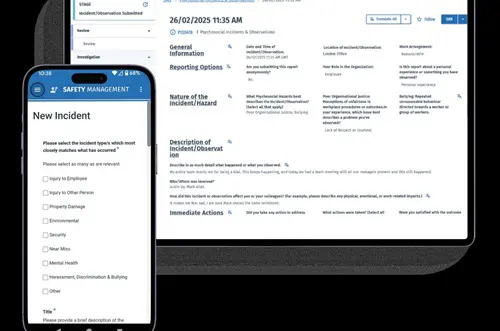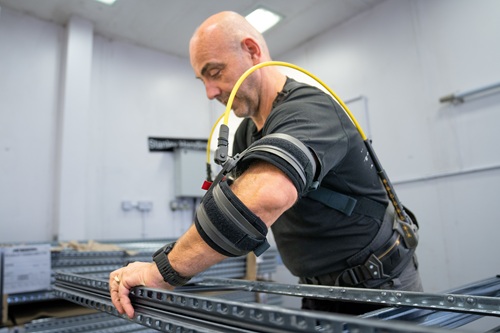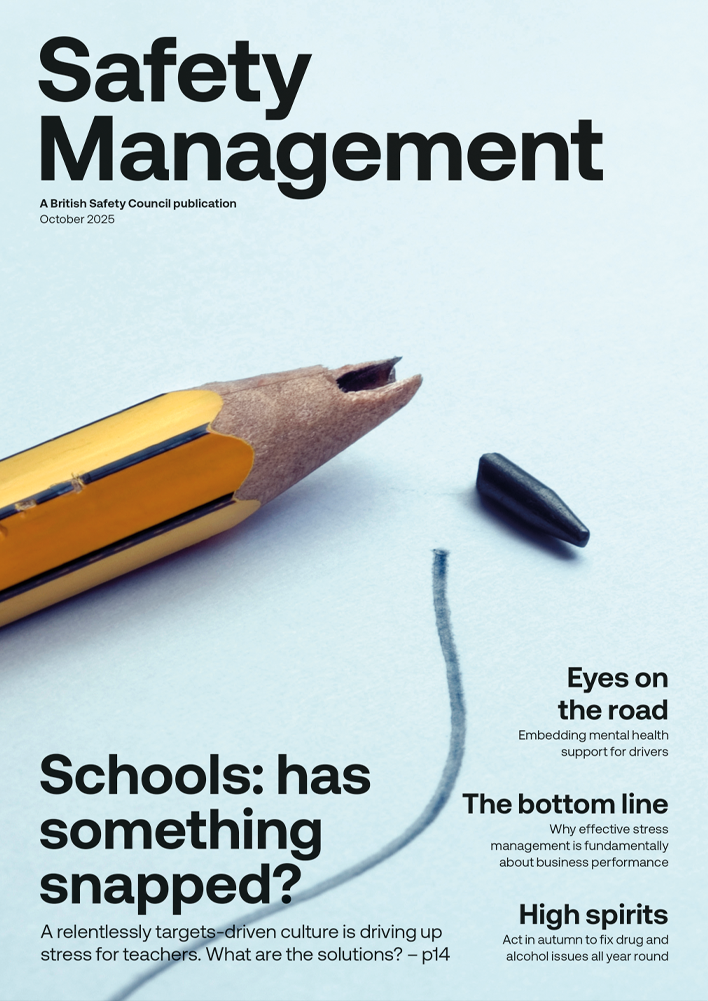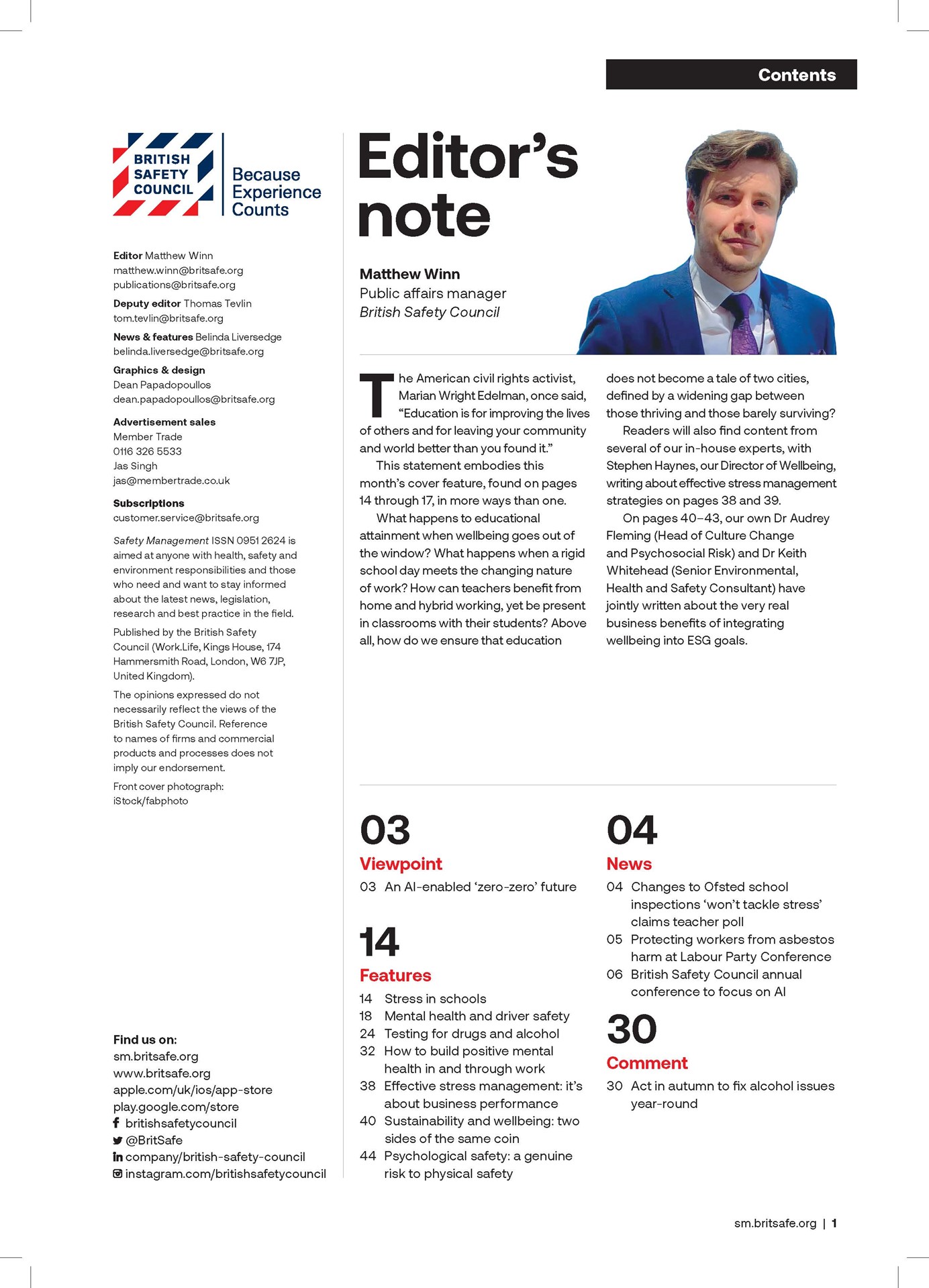People with Tourette syndrome often face barriers to employment and are subject to stigma and even ridicule due to misunderstanding about the condition's symptoms. However, employers can make a real difference towards supporting people with Tourette's to enter and thrive at work, starting with creating a culture of understanding and inclusion among work teams. Safety Management spoke to Ione Georgakis from the charity Tourettes Action to find out more.
Features
Tourette’s: why it’s time to end the stigma and discrimination at work
SM: What is Tourette’s, and how does it present?
IG: Tourette syndrome is a neurodevelopmental condition that typically begins in childhood, most often between the ages of five and 10. It has a strong genetic component, and tics frequently run in families. Symptoms usually develop gradually, starting with simple motor tics such as blinking, facial movements or shoulder shrugging. These may be followed by simple vocal tics, including sounds like grunting, throat-clearing, or even occasional words or phrases. Tic severity can fluctuate over time - often increasing during early adolescence, and in some cases, decreasing or becoming more manageable in adulthood.
For a diagnosis of TS, a person must have experienced multiple motor tics and at least one vocal tic for over a year. Tics can range from simple (single sounds or movements) to complex (multi-step actions or phrases). As with all neurodevelopmental conditions, there’s a wide spectrum of severity - from subtle, barely noticeable tics to intense, disruptive ones that can affect physical safety and social wellbeing.
Tic severity can also fluctuate daily, influenced by factors like stress, fatigue, pain or excitement. It’s important to understand that TS affects everyone differently.

SM: What are some common misperceptions about Tourette syndrome?
IG: There are many myths surrounding the complex condition of Tourette syndrome - so pervasive that even some medical professionals hold misconceptions. For instance, at Tourettes Action, we’ve supported individuals who were told, “You can’t have Tourette’s because you don’t swear.” In reality, only around 15-20 per cent of people with TS experience coprolalia, the involuntary use of profanities or inappropriate language. Despite being a minority symptom, coprolalia dominates media portrayals, reinforcing a narrow and misleading image of TS.
It’s crucial to raise awareness of the broad spectrum of tics and experiences within the TS community - without sensationalism or humour narratives. Another common myth is that TS only affects children. While some may experience reduced symptoms in adulthood, many continue to live with TS throughout their lives.
Perhaps most harmful is the portrayal of Tourette’s as a “funny” condition. Tourette syndrome remains one of the few neurological or developmental conditions still openly used as a joke, especially in media, comedy and online culture. Yet the reality is often painful: nearly everyone with TS reports daily physical discomfort or injury from tics, which can significantly impact their ability to perform everyday tasks like working, cooking, moving or socialising.
That said, Tourette’s can also bring creativity, humour, and connection - but it’s the right of those living with it to decide how they frame their experience. The message is simple: laugh with us, not at us.
SM: How common is Tourette’s?
IG: Despite popular belief, Tourette syndrome is not rare. It affects an estimated one in 100 school-aged children, roughly one per cent of the general population, and over 300,000 people in the UK. TS is a global condition, with documented cases worldwide.
SM: How might living with Tourette’s make work challenging?
IG: People with TS work across all sectors - from those seeking employment to those in leadership roles. However, research tells us the primary barriers to work include coprolalia, which can lead to misunderstandings, and tic severity and high levels of co-occurring conditions. These factors should never prevent someone from being hired.
Other challenges include pain, sleep disruption, tic-related injury and difficulties with executive functioning. However, one of the biggest barriers remains a lack of awareness and social understanding within teams. At Tourettes Action, we are addressing this - one workplace at a time.
 Ione Georgakis: "I’ve experienced the highs and lows of navigating recruitment and employment with TS."
Ione Georgakis: "I’ve experienced the highs and lows of navigating recruitment and employment with TS."
SM: How have you brought your personal lived experience to your work?
IG: Working at Tourettes Action allows me to combine my lived experience of Tourette’s, ADHD and dyslexia with my professional background as an occupational therapist. I’ve experienced the highs and lows of navigating recruitment and employment with TS. These experiences, along with insights from our Adult Lived Experience Advisory Panel, have helped shape our employment support services.
We identified a major gap in support for adults with TS in the workplace. In response, we developed a multi-tiered support offer:
- Online guides for employers and employees, including legal advice and case studies.
- One-to-one support calls addressing specific workplace issues, including environmental and practical adjustments.
- Team-based training to build awareness and social support around the employee.
This comprehensive approach has been endorsed by 100 per cent of service users, and we’ve now trained over 60 organisations, including international banks, the NHS and police forces.
Through our TS Friendly Scheme, organisations can earn an accredited badge by completing training and creating inclusive environments. With over 300,000 people in the UK living with TS, this kind of support can be transformative.
SM: What should employers do to support someone with Tourette’s?
IG: First, get to know the person - their strengths, goals, and what they need to thrive. Use a strengths-based approach, focusing on ability rather than limitation. Since symptoms can change, flexibility is key. Avoid making assumptions, and instead, be curious and ask questions. Most importantly, train the wider team. Team training is often the most sustainable adjustment you can make. It creates a culture of understanding, inclusion and confidence - and reduces stigma. If you're unsure how to support an employee with TS, reach out to Tourettes Action. Our helpdesk and advocacy team offer tailored guidance for both employers and employees.
SM: Is occupational therapy or health and safety particularly important for people with Tourette’s?
IG: Absolutely. As an occupational therapist, I strongly believe this profession is uniquely well positioned to support people with TS throughout life. Occupational therapists can help individuals identify their strengths and implement physical, sensory, or social adaptations to help them engage safely in meaningful activities.
Occupational health services can also play a vital role in assessing workplace needs. However, due to TS being misunderstood and underrepresented, many services benefit from collaborating with specialists - like Tourettes Action - to ensure their recommendations reflect the real challenges and opportunities of living with tics.
SM: Do you want to highlight any campaign for Tourette’s Awareness Month (15 May–15 June)?
IG: From May 15 to June 15, Tourette’s Awareness Month is an opportunity to shine a spotlight on Tourette syndrome and the lives of those affected by it. At Tourettes Action, we are proud to launch our most powerful and personal campaign to date: #Misunderstood.
The #Misunderstood Campaign
This year, we’ve teamed up with creative agency AML and production company The Attic to create a deeply moving short film. The campaign features Grace, who lives with TS, and a choir of individuals with the condition. Together, they perform a stunning reinterpretation of Nina Simone’s “Don’t Let Me Be Misunderstood”—bringing the message to life through music, emotion, and shared experience.
The film gives viewers a window into the real, everyday challenges faced by those with TS—from having to constantly explain their tics to dealing with public reactions. It ends with a powerful call for empathy, connection, and change.
🎥 Watch the film and explore the campaign here.
“This is our most ambitious campaign yet,” says Emma McNally, CEO of Tourettes Action. “We want to challenge misconceptions and create a space where people with TS feel seen and understood - not judged. With over 300,000 people affected in the UK, the time for change is now.”
Get involved by signing up for our newsletter, following us on social media, sharing our posts, or even hosting your own event. Join us in raising awareness, reducing stigma, and improving access to support for the TS community.
For more information see:
https://www.tourettes-action.org.uk/192-tourettes-awareness-month-2025.html
https://www.facebook.com/TourettesAction
https://www.tiktok.com/@tourettes_action
https://www.youtube.com/@UKTourettesAction/
https://www.linkedin.com/company/tourettes-action/
About the author
Ione Georgakis is therapies and advocacy manager at Tourettes Action.
FEATURES

The psychosocial safety challenge: why UK organisations must rethink risk management
By Jose Arcilla, HSI on 09 December 2025
Employers are increasingly keen to effectively manage psychosocial risks such as stress, bullying and poor work-life balance, and EHSQ digital tools make it easier both for workers to report psychosocial problems and for managers to spot patterns and trends, intervening early to protect everyone’s mental and physical wellbeing.

AI-powered wearables: transforming workplace health and safety
By Graham Sharp, Stanley on 08 December 2025
Wearable technology powered by AI analysis is now regularly deployed to prevent safety problems like musculoskeletal injuries and collisions between forklifts and pedestrians, and future developments mean the technology looks set to make it easier to manage other safety challenges, like site evacuations.

Supporting neurodiverse employees: why standard DSE assessments fall short
By Guy Osmond and Alex Reffell, Osmond Ergonomics & Wellbeing on 08 December 2025
Display screen equipment assessments have traditionally focused on tackling the physical ergonomics of desk-based work in a bid to reduce musculoskeletal risks, but effectively supporting the wellbeing and productivity of neurodivergent workers involves a wider consideration of their cognitive, sensory, organisational and environmental needs.



